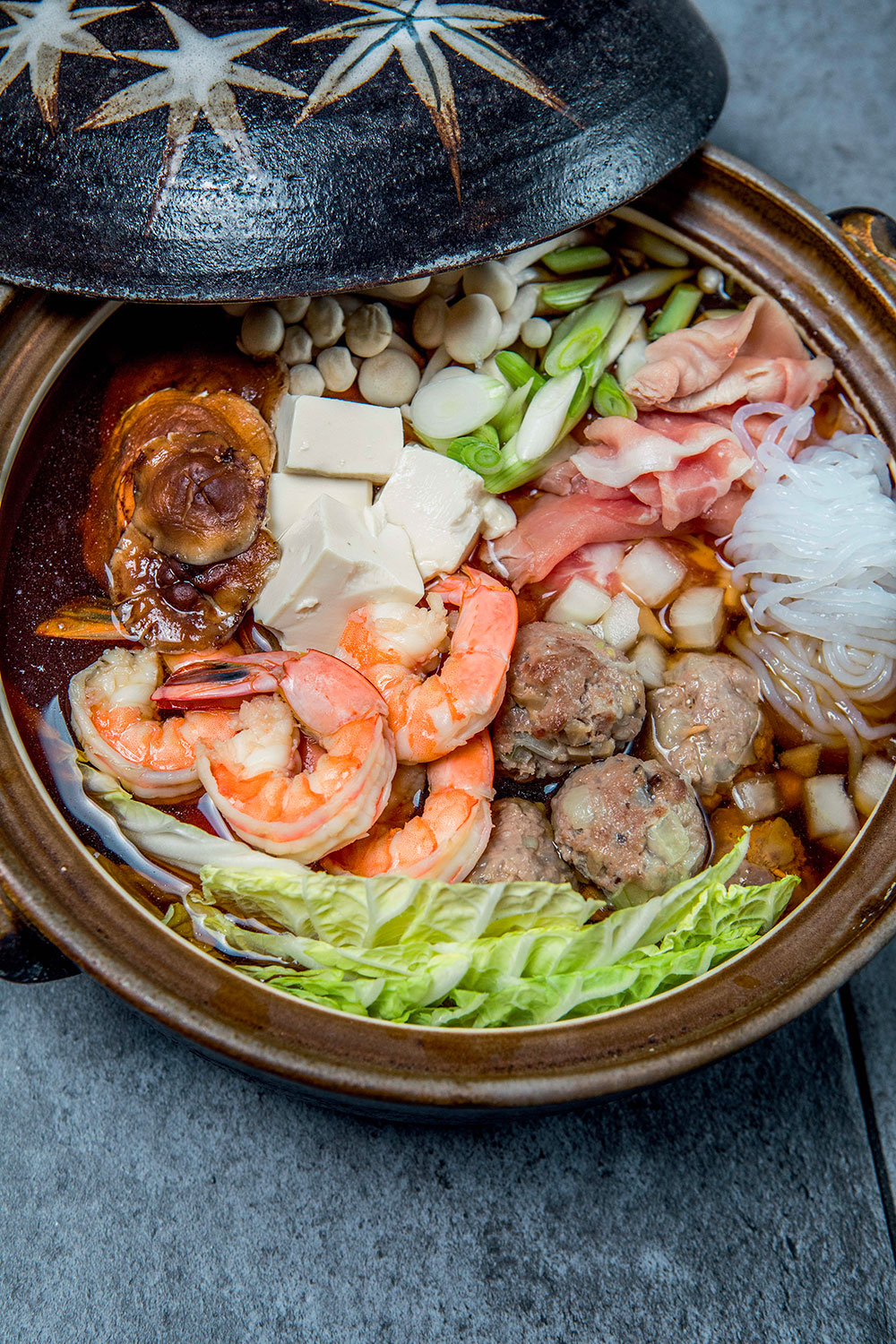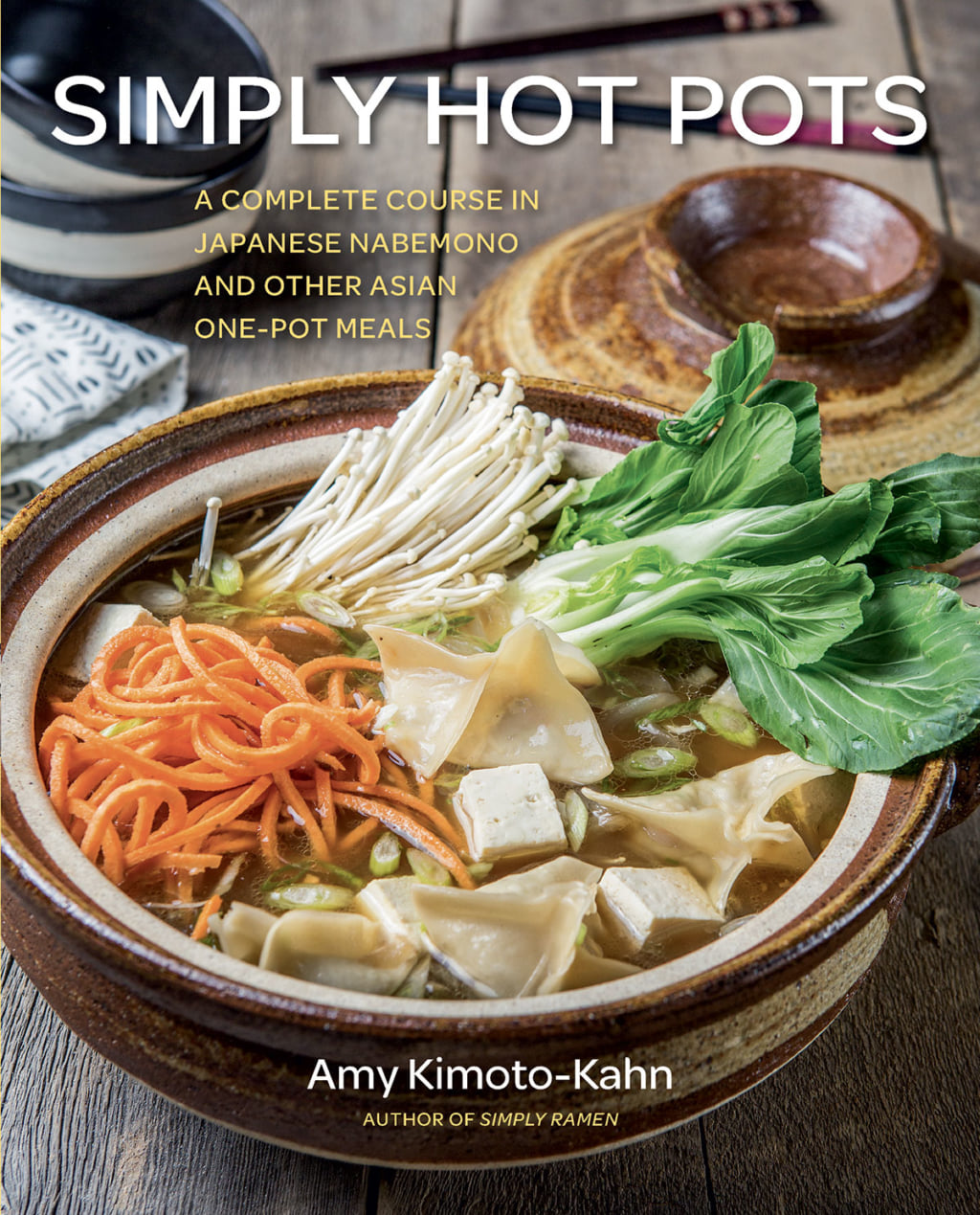Recipe for Hotpot by Amy Kimoto-Kahn
'Chanko nabe' is a highly calorific dish that's extremely popular with sumo wrestlers, who eat it as fuel before their competitions.

Race Point Publishing
Fans of light dishes can move on: chanko nabe is the central dish served in sumo–beya, the stables where Japanese wrestlers train and live. Very high in protein, particularly thanks to the chicken breast, fried fish, beef, and tofu it contains, this hotpot is often served with a bowl of rice and beer, both of which add to its calorie content.
‘Traditionally, this was a dish that teammates would make for each other to help gain them weight—it’s packed with lean proteins and vegetables that give sumo wrestlers the strength and energy for competing’, the author explains in the introduction to her recipe.
Author of the blog easypeasyjapanesey, private chef Amy Kimoto-Kahn lives in Colorado with her family. In her book Simply Hot Pots, she shares 75 recipes for comforting Japanese hotpots. Made using broth as a base, for which the chef also offers cooking tips so that the whole recipe can be made at home, these nabe can be garnished with a vast range of ingredients, whether meat-based or vegetarian.
Ingredients
Meatballs:
64 g cornstarch
454 g ground chicken (dark meat only)
2 scallions, white and light green parts only, thinly sliced
2 dried shiitake mushrooms, soaked in warm water for 1 hour, drained, and finely chopped
1/2 medium Vidalia onion, finely chopped
1 piece (1 inch, or 2.5 cm) fresh ginger, peeled and finely grated
1 teaspoon sake (rice wine)
1 teaspoon sugar
1 teaspoon kosher salt
1/8 teaspoon freshly ground black pepper
Nabe:
1.9 l basic dashi (or dashi made with an instant mix)
120 ml shoyu (Japanese soy sauce)
120 ml sake (rice wine)
1 teaspoon sugar
1 teaspoon kosher salt
227 g pork loin, very thinly sliced
227 g large shrimp (6 to 8 shrimp), shelled, tails on, and deveined
1 block (395 g) firm silken tofu, drained and cut into 2.5-cm cubes
454 g prepared white shirataki noodles, drained and divided into 85-g portions
6 shiitake mushrooms, cleaned and stemmed
140 g forest nameko mushrooms (or buna-shimeji or enoki mushrooms), cleaned, trimmed, and torn into large pieces
4 large scallions, white and light green parts only, cut diagonally into 7.5-cm lengths
1 medium sweet onion, cut into 0.6 cm-thick rings
1/4 head Napa cabbage, cored and thick white parts cut into bitesize pieces
Steamed Japanese rice, for serving
Method
To make the meatballs:
Bring a large pot of water to a boil over high heat. Line a plate with paper towels and set aside. Spread the cornstarch in a shallow bowl.
In a large bowl, mix together all the remaining meatball ingredients (be careful not to overmix or the meatballs will be dense). Wet your hands with a little water and form the mixture into ping-pong-size balls. You should have about 12 meatballs. Dredge the meatballs in the cornstarch and transfer to a plate.
Gently drop the meatballs into the boiling water and cook until they rise to the surface and are partially cooked through, for about two minutes. Using a slotted spoon, transfer the parboiled meatballs to the paper towel-lined plate to drain.
To make the nabe:
Heat a 3.8-l hot pot or large saucepan over medium-high heat (about 220°C, in an electric pot). Add the dashi, shoyu, sake, sugar, and salt. Bring to a boil.
Add the sliced pork, shrimp, tofu, noodles, vegetables, and parboiled meatballs. Cover the pot and reduce the heat to low. Simmer for about five minutes, until the pork, shrimp, and meatballs are cooked through and the vegetables are tender.
Ladle into shallow bowls and serve.
After the meat, tofu, noodles, and vegetables have been eaten, add the steamed rice to the remaining broth and let it soak up the liquid, like a risotto, stirring occasionally, until most of the broth has been absorbed. Serve the porridge as a shime (end-of-meal course).
Simply Hot Pots (2019), a recipe book by Amy Kimoto-Kahn, is published by Race Point Publishing, and is available in English only.
A graduate of the Miyajima Ramen School in Osaka, Amy Kimoto-Kahn has also written Simply Ramen, which outlines various versions of this popular Japanese dish.

Race Point Publishing
TRENDING
-
A House from the Taisho Era Reveals Its Secrets
While visiting an abandoned building, Hamish Campbell discovered photographs the owner had taken of the place in the 1920s.

-
The Taboo-Breaking Erotica of Toshio Saeki
The master of the 1970s Japanese avant-garde reimagined his most iconic artworks for a limited box set with silkscreen artist Fumie Taniyama.

-
With Meisa Fujishiro, Tokyo's Nudes Stand Tall
In the series 'Sketches of Tokyo', the photographer revisits the genre by bringing it face to face with the capital's architecture.

-
Masahisa Fukase's Family Portraits
In his series ‘Family’, the photographer compiles surprising photos in which he questions death, the inescapable.

-
Hajime Sorayama's Futuristic Eroticism
The illustrator is the pioneer for a form of hyperrealism that combines sensuality and technology and depicts sexualised robots.





